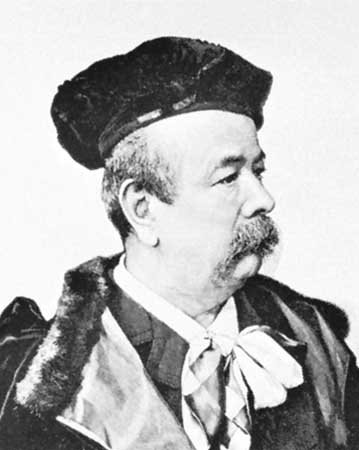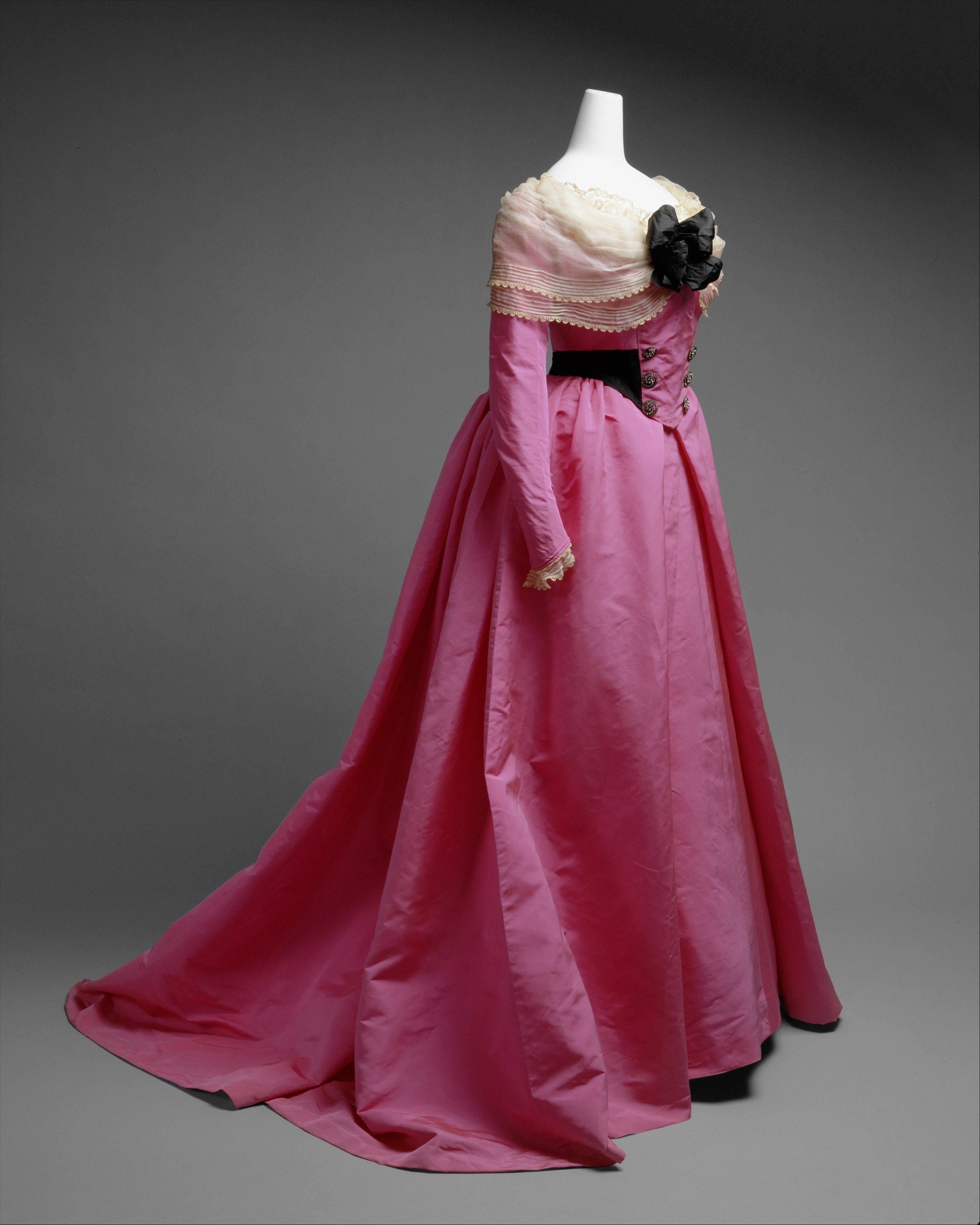Worth & Paris Couture
Paris Couture & Charles Frederick Worth: The First Designer
Charles Frederick Worth was born on October 13, 1825, in Bourne, Lincolnshire, England. He became the dominant figure in Parisian fashion in the second half of the nineteenth century. Worth was an apprentice and clerk for two London textile merchants when he was a young man. During this time, he not only acquired a thorough knowledge of textiles but also visited the National Gallery in London and other collections to research historical portraits. Later, Worth's own designs for fashionable garments and fancy dress costumes drew influence from details of the sitters' clothing in these paintings.
In 1845, Worth emigrated to Paris. Despite his early difficulties, he eventually obtained employment with Gagelin, a well-known company that sold textile products, shawls, and some ready-made clothing. Worth established himself as Gagelin's top salesman and successfully established the company's first-ever dressmaking department. With prize-winning designs on exhibit at the Great Exhibition in London in 1851 and the Exposition Universelle in Paris in 1855, he helped to grow the company's reputation. In 1858, Worth and his business partner established their own company.
Charles Frederick Worth
The House of Worth atelier on Rue de la Paix, ca. 1894
The Second Empire in France coincided with Worth's ascent in the fashion industry. With Napoleon III as the new emperor and the reinstatement of a royal house in 1852, Paris was yet again serving as an imperial capital and the venue for various state functions. Napoleon III carried out an ambitious plan for both Paris and France, bringing about modernization and innovations that revived the French economy and turned Paris into the center of attention for all of Europe. The demand for luxury goods, including textiles and fashionable dress, reached levels that had not been seen since before the French Revolution. Empress Eugénie, Napoleon III's wife, established the dominant fashion at court. The empress's patronage guaranteed Worth's status as a renowned dressmaker from the 1860s.
Worth's designs are notable for their use of opulent textiles and trimmings and historical dress references. The designer is widely known for creating a variety of designs that were displayed on live models at the House of Worth, in addition to continuing to develop unique pieces for his most important clientele. In Worth's atelier, customers made their selections and had their clothing custom-made. Worth organized his company in this way, but he wasn't the first designer to do so. Nevertheless, because of his relentless self-promotion, he has been given the nicknames "father of haute couture" and "the first couturier." By the 1870s, Worth's fame had reached women outside of the aristocracy, thanks to his frequent appearances in mainstream fashion periodicals.
Empress Elisabeth “Sisi” of Austria wearing a Worth gown, ca 1865. Painting by Franz Xaver Winterhalter. Kunsthistorisches Museum, Vienna, Austria.
The large number of surviving Worth garments in the permanent collections of American and international museums is proof of Worth’s immense popularity among wealthy American patrons and European royalty and aristocrats. Many customers made the trip to Paris to shop at the House of Worth for their whole wardrobes. Morning, afternoon, and evening outfits, as well as opulent "undress" items like nightgowns and tea gowns, which were exclusively worn in the privacy of one's own home, made up the complete wardrobe of the affluent woman. Women turned to Worth for wedding dresses and elaborate costume balls, which were popular entertainment in both the United States and Europe. Stars from the theater and opera were also among Worth's clients. He supplied costumes and personal wardrobes for leading actresses and singers such as Sarah Bernhardt and Lillie Langtry.
Charles Frederick Worth turned his design firm into a substantial enterprise in the final quarter of the nineteenth century due to his excellent design talents and marketing. After his death in 1895, his sons Gaston-Lucien and Jean-Philippe successfully took over the family business and maintained his high standards. Particularly, Jean-Philippe's designs, with their use of dramatic fabrics and embellishments, followed his father's style. The sons ran the house successfully until the 1920s. In 1952, when Jean-Charles, a great-grandson of Charles Frederick Worth, retired from the family business, the great fashion dynasty finally came to an end. The business eventually merged with Paquin, another illustrious French House.




















